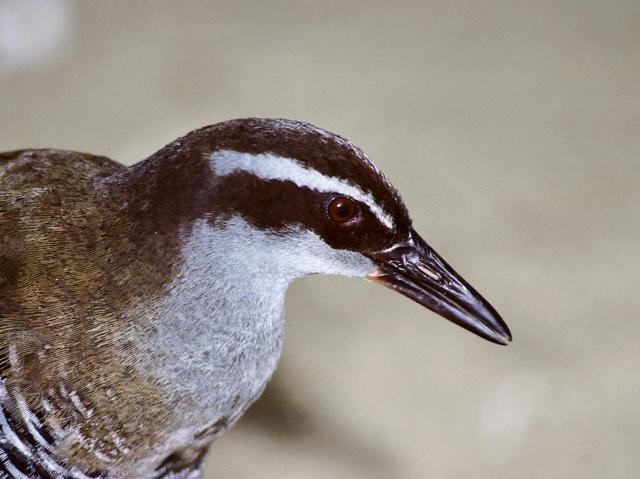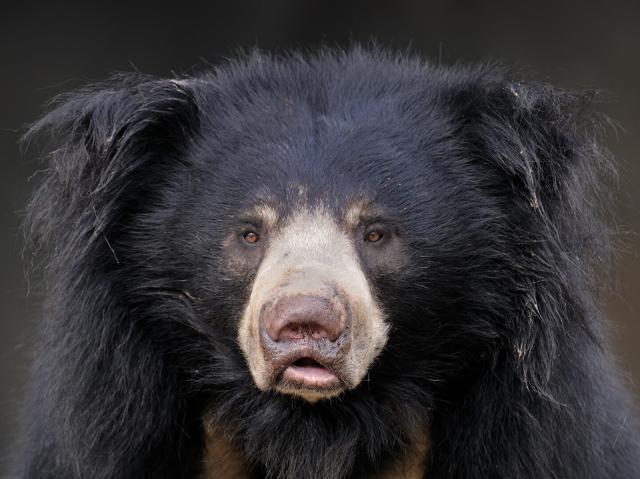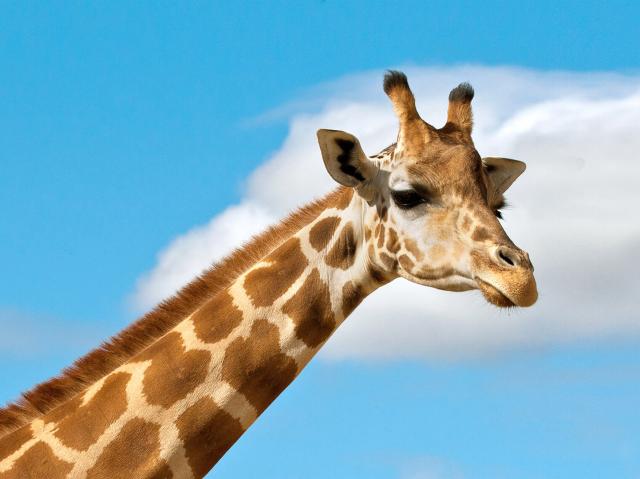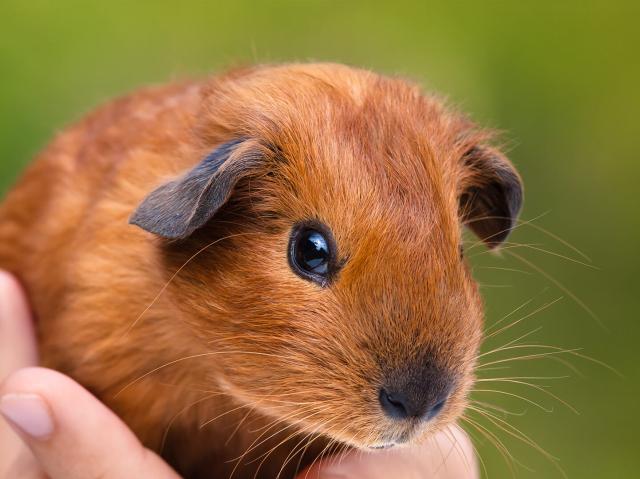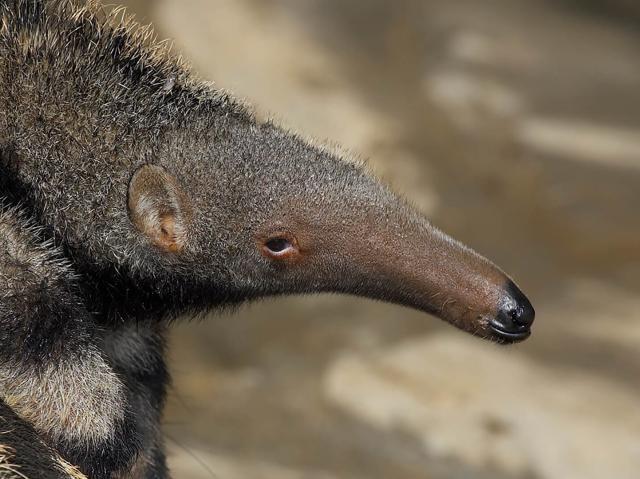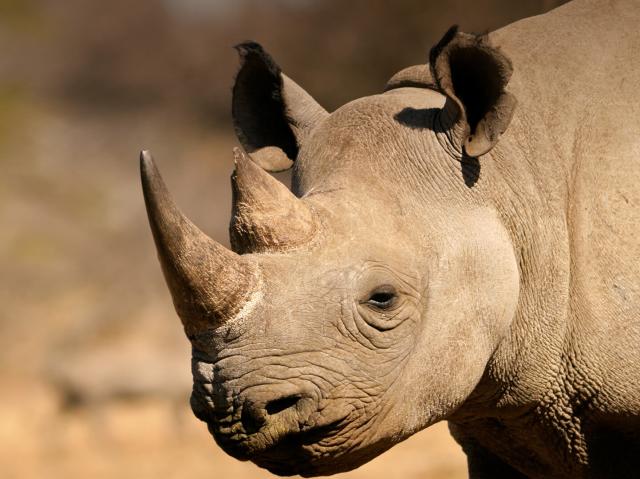
Mandrill

- CLASS: Mammalia (Mammals)
- ORDER: Primates
- FAMILY: Cercophithecidae
- GENUS: Mandrillus
- SPECIES: sphinx

ABOUT
Big and brilliant: Mandrills are the largest and most colorful of the Old World monkeys. They are related to baboons and even more so to drills. Their furry head crest, mane, and beard are quite impressive. But what grabs your attention is their bright coloration. They have thick ridges along the nose that are purple and blue, red lips and nose, and a golden beard. It almost looks like they’re not real!

An adult male mandrill that has the brightest and most distinctive colors on his face seems to be most attractive to females. But that's not all—those bright colors show up again on the mandrill’s rear end! Why? Well, those colors impress the ladies. And, they help mandrills to follow each other in thick forests. Adult females have duller colors and longer muzzles. They are also much smaller, about half the size of the adult males.
HABITAT AND DIET
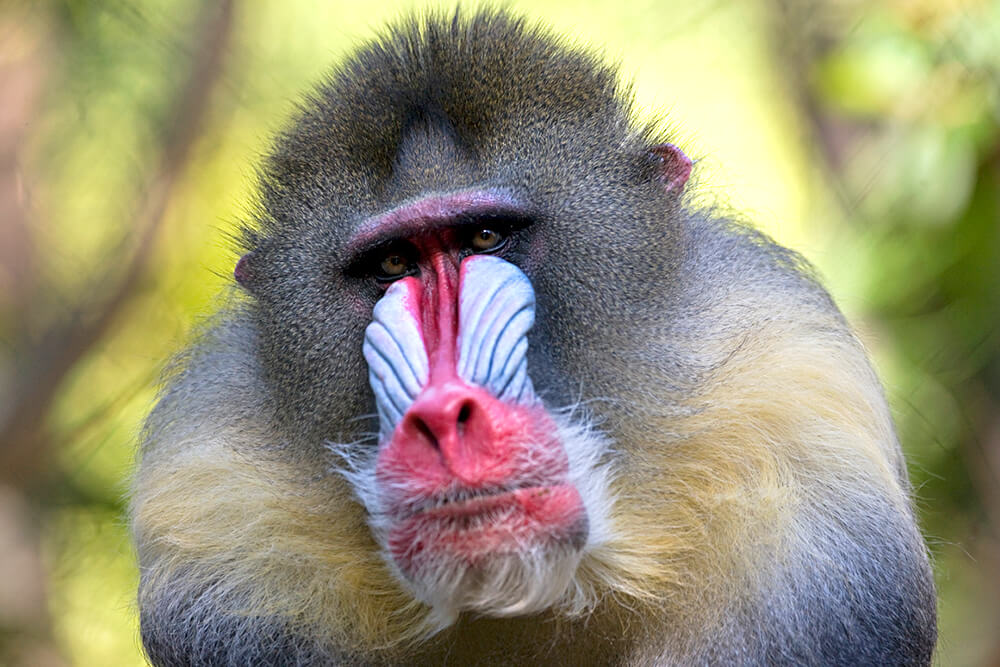
Mandrills live in the rainforests of equatorial Africa. They have long arms and can travel long distances on the ground. They do climb trees, though, and even sleep there, selecting a different tree each evening.
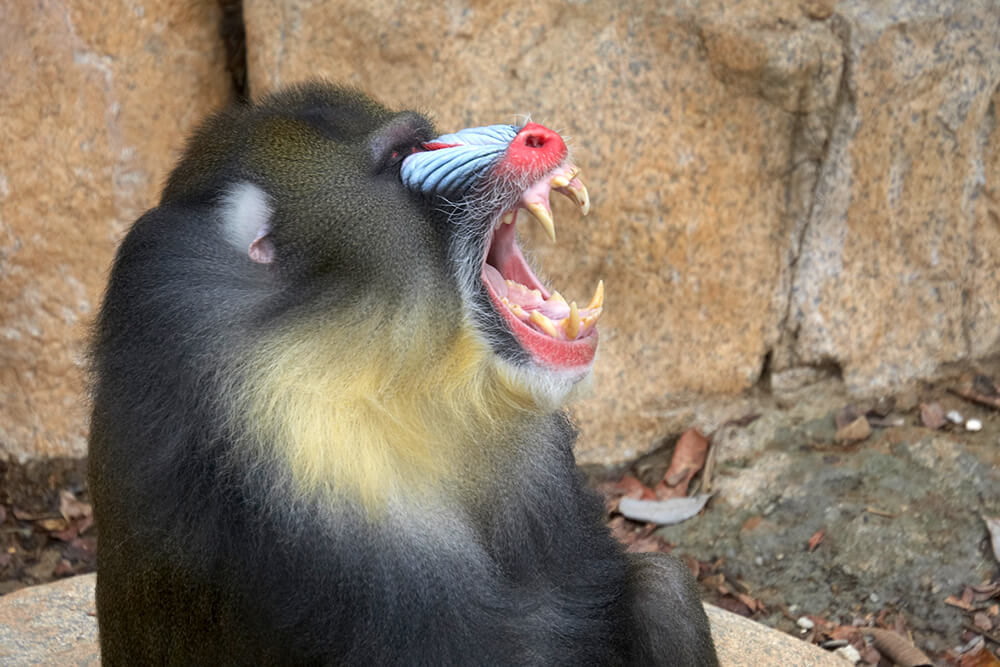
Mandrills come equipped with their own built-in carryout containers! They have large cheek pouches inside their mouth that they can stuff full of food to eat at a later time. Sometimes they take their goodies to a safer location before enjoying them. Male mandrills spend most of their time on the ground, foraging for seeds, nuts, fruits, and small animals. Females and youngsters find their food in the trees.
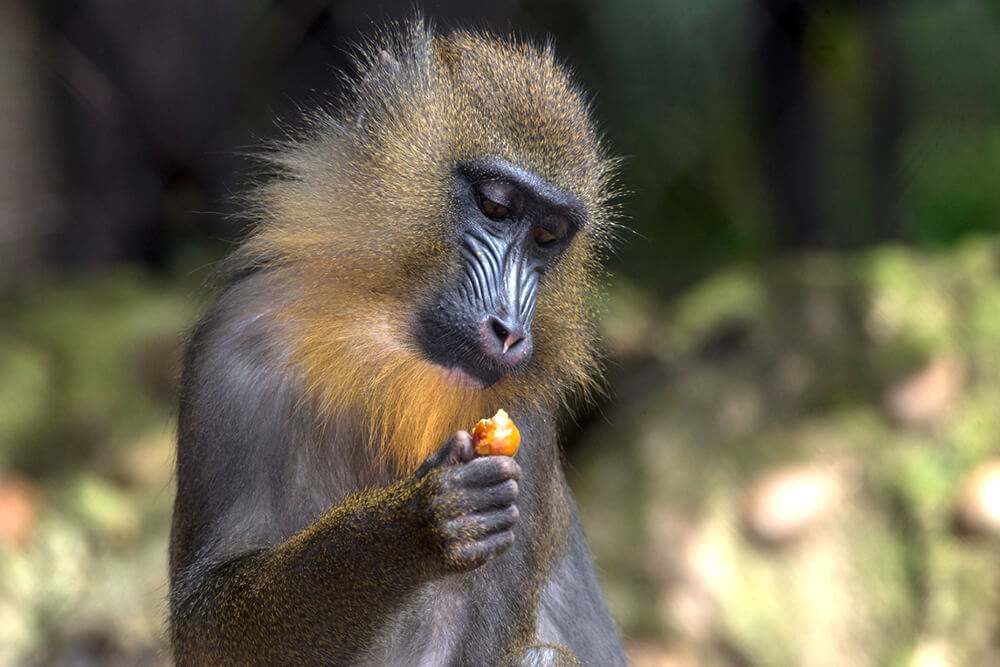
FAMILY LIFE
Mandrills live in small social units, but often join up with other small groups to form larger ones called hordes. One of the largest groups documented numbered over 1,200 mandrills! Mandrill hordes are noisy. They communicate with deep grunts and high-pitched screams while they forage and travel. Male mandrills do not reach full adult maturity until they are about nine years old. This is a challenging time in their life. They must find their own food and fight other males to assert themselves as they work their way up the ranks. During this time, their bright rump and facial colors appear. The more testosterone they develop, the more vibrant his colors and the more attractive he becomes to the females.
The females choose which males they want to socialize and breed with. Only the most colorful and social males sire the majority of the offspring. Those colors fade on a male that loses status.
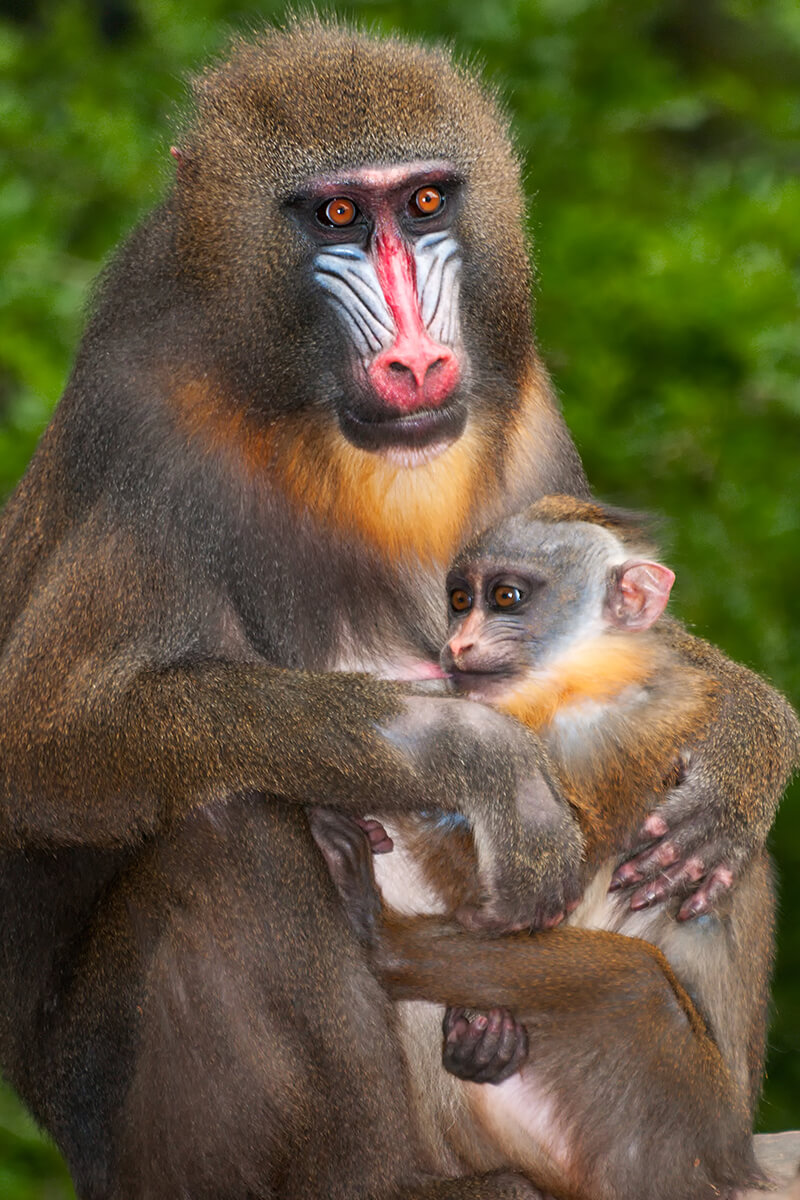
Female mandrills usually give birth to one baby. The infant is born with a dark fur coat, pinkish face, white hair on their arms and legs, a black cap of hair on the head, and open eyes. It can cling to the mother's belly immediately. At two months of age, it starts to lose the baby hair and grow its adult coat. The youngster typically stays with Mom until she gives birth to her next baby and pushes her older offspring away.
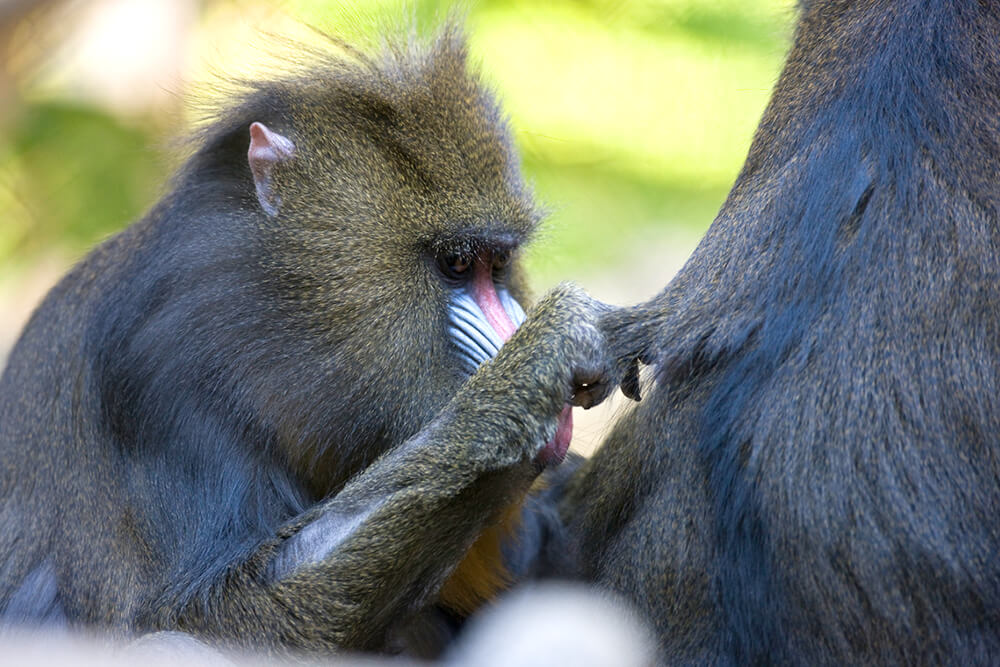
Like all monkeys, mandrills communicate through scent marks, vocalizations, and body language. Sometimes they shake their head and "grin" to show their enormous canine teeth, which can be over 2 inches (5 centimeters) long. This may appear scary to us, but it’s usually a friendly gesture within the mandrill community. Mandrills also have a loud, almost human-like scream, which is followed by a series of rapid, deep, guttural grunts to start their day! Other distinct vocalizations are used in both long-and short-range communications.
If a mandrill gets upset, it may beat the ground energetically. This is no slight gesture, as the mandrill is strong and muscular with powerful limbs. This is a convincing hint to back off! Male mandrills have a scent gland on their chest that they rub on objects as cues to others in their group.
CONSERVATION
Mandrills are listed as a Vulnerable. Conservation organizations are working to protect mandrill habitat from illegal logging and the growing commercial bushmeat trade. This trade has become lucrative, and, as human populations increase, it is a greater threat today than ever before. And, as human settlements expand, mandrills are losing their habitat to logging and clearing of forests for agricultural use.
By supporting San Diego Zoo Wildlife Alliance, you are our ally in saving and protecting wildlife worldwide.
LIFE SPAN
For mandrills in managed care, median life expectancy is about 20 years
YOUNG
Gestation: 179 to 182 days
Number of young at birth: Usually 1; sometimes 2
Weight at birth: 1 to 2 pounds (.4 to .9 kilograms)
Age of maturity: 4 to 7 years
SIZE
Height: Females, about 22 inches (55 to 67 centimeters); males, about 32 inches (62 to 110 centimeters)
Weight: Females, 25 pounds (11 to 13 kilograms); males, 55 pounds (18 to 33 kilograms)
Tail length: 2 to 3 inches (5 to 10 centimeters); males have longer tails than females
FUN FACTS
The male mandrill is the largest living monkey.
Mandrills are also known as forest baboons.
The character Rafiki in Disney's "The Lion King" is referred to as a baboon. But take a closer look, and you'll see he has the colorful face of a mandrill.



